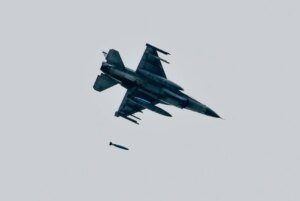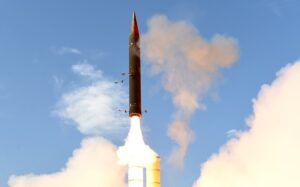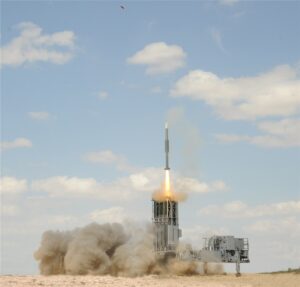Epirus推出高功率微波武器,可使船发动机失效
快速阅读: 8月2024日,美国印第安纳州,反无人机公司Epirus展示新型高功率微波系统Leonidas H2O,在海军演习中成功使多种船只发动机失效,有效范围近100米,填补非动能舰艇停止技术空白。
Counter-drone company
Epirus
unveiled a
new high-power microwave system
capable of disabling manned and unmanned boat motors, it announced Tuesday.
Leonidas H2O “was effective against vessel motors at record ranges” during the U.S. Navy’s Advanced Technology Exercise Coastal Trident event in Crane, Indiana, held in August 2024, according to the announcement. The system knocked out four commercially available vessel motors, varying in horsepower from 40 to 90 “at a multitude of ranges,” it noted.
The Pentagon “has spent years of research and development and spent tens-of-millions of dollars into developing a non-kinetic vessel stop solution, with no operational system deployed to date. With Leonidas H2O, we are bringing forth a technology with demonstrated effectiveness to fill this capability gap, today,” Epirus CEO Andy Lowery said in the statement.
The California-based company debuted its ground-based system designed to protect forward operating bases from incoming swarm threats in 2020 and has since proven
Leonidas can adapt
to other platforms, including being
mounted on a drone in a pod
.
“Leonidas, by its nature, it’s just an old-fashioned platform. We’ve made force fields … of electromagnetic energy,” Lowery told Defense News. “Whether that electromagnetic energy spoils a drone’s electronics from working correctly or spoils a boat’s motor, or use your imagination, anything with little computers in it and stuff, is susceptible to these persistent fields of energy.”
The recent Navy exercise proved the system — scaled down to a third of its original size — could go up against “a whole bunch of different types of boat motors out there,” Lowery said. It did so despite testing restrictions at the range limiting it from operating at full strength and from using certain frequencies.
Lowery noted that the system was effective up to nearly 100 meters working at half power.
The technology would come in handy at ports and close to coastlines, where kinetic defenses would not be a good option, Lowery said.
Adapting Leonidas for marine operations meant the company took into account that it would endure the corrosive effects of salt water, but otherwise, “the system works more or less the same,” Lowery said. “Except for one item,” he added. “It kind of uses the water as a mirror, and so [we] can use the water to our advantage, that is it hits certain spots in even further distances by using reflections off the water.”
Because of the beams’ behavior on water, the company made adaptations to the software, he noted.
One limitation of the system is that it does not work under water.
“The frequencies just don’t propagate under water. They just stop dead in like an inch of travel,” Lowery said.
Epirus continues to work to get the capability
into the hands of service members
. There are two systems deployed with the Army in the U.S. Central Command area of operations and a few others going to another operational area, Lowery said.
RELATED
US Army could soon have a high-power microwave to destroy small drone swarms
The Army wants to begin high-power microwave development and prototyping efforts in FY22 to defeat small drone swarms.
By
Jen Judson
“Operational commanders probably have the strongest voice on hitting a gas pedal and getting us moving a lot quicker,” he added.
A Navy solution, Lowery said, could be delivered “expeditiously.” The system could be packed in a container to fit on a vessel like a Littoral Combat Ship or a Coast Guard cutter, he noted.
“They can very easily put one of these on long fantail ships. Even some of these same fantail ships are in the Black Sea trying to do sort of escort control for merchants and other things running through that region,” Lowery said. “Another excellent idea is to try to hit some of the surface missiles that the Houthis and stuff are sending out. We could try our hand at disrupting some of those things as well.”
Lowery said he often points to how the Russian invasion of Ukraine in recent years has left Russia with roughly 50% of its navy capabilities destroyed, sunk or damaged beyond use by Ukrainians, with no navy, using unmanned weapons.
“We’re back into this war of the machines. We’re back into this kind of guerrilla warfare where the first wave of battle ends up becoming machines on machines,” he said. “We can have a system that has a very deep magazine that can build force fields out and take care of these, not only unmanned air vehicles, but unmanned surface vessels and unmanned ground vehicles.”
About
Jen Judson
Jen Judson is an award-winning journalist covering land warfare for Defense News. She has also worked for Politico and Inside Defense. She holds a Master of Science degree in journalism from Boston University and a Bachelor of Arts degree from Kenyon College.
Share:
More In Industry
Space Force launches satellite to explore new GPS technology
The mission is AFRL’s first major PNT demonstration since 1977, when it launched NTS-2 — a satellite that helped shaped the modern GPS constellation.
Space Force wargame could inform framework for allied info sharing
The two-week wargame is focused on understanding what capabilities and operational concepts the Space Force might need 10 years into the future.
New ‘Vulcan’ rocket to fly first military mission next week
Pending range approval, the mission is slated to lift off Aug. 12 from Cape Canaveral Space Force Station in Florida.
Space Force preps infrastructure, operators for target-tracking mission
The service plans to launch initial ground moving target indicator satellites over the next year, according to Lt. Gen. DeAnna Burt.
Senate confirms new top Navy leader, vice chief for Space Force
Adm. Daryl Caudle, who has been the commander of U.S. Fleet Forces Command since 2021, was approved as the next chief of naval operations.
(以上内容均由Ai生成)








